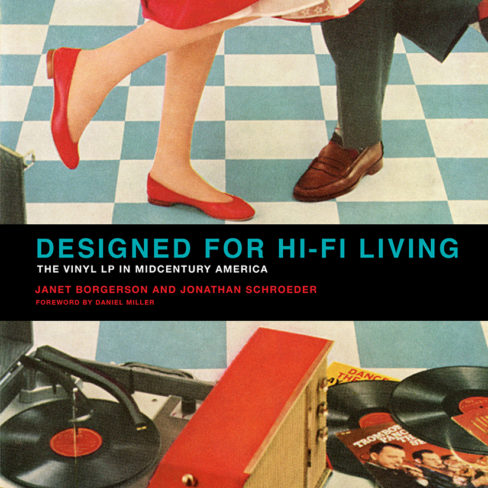Announcing the publication of a new book by Janet Borgerson and Jonathan Schroeder, published by MIT Press in August 2017:
This book presents a visually striking selection of vintage album covers from the golden age of record cover design and discusses their contribution to postwar American consumer culture.
Not just decorated cardboard that protected the vinyl disks within, record album covers in the 1950s and 1960s served commercial, pedagogical, and rhetorical purposes. Record albums, as popular and mass culture artifacts, were designed to teach US citizens about ideal lifestyles in postwar America. Record albums suggested how to entertain at home, appreciate diverse cultures, and travel the world. The book explores the contribution of record albums, as consumer artifacts, to the imagination and construction of modern US identity and global citizenship, and discusses how the Cold War raging between the two postwar superpowers encroached upon the design, music, and marketing of mainstream albums. These midcentury LPs – featuring the Cuban playground released before Castro, jazz albums adorned with abstract art, and lifestyle LPs with attractive images of appliance-filled kitchens – appear as subtle elements of the ideological struggles of the era. Drawing upon notions of materiality and agency in the constitution of consuming subjects, and informed by critical visual and cultural analysis, the book reveals how peripheral objects, such as record albums, reveal hidden pedagogical aspects of consumer culture.
The book is organized into “home” and “away” sections. As recording technology emerged and developed, it brought sounds, sights and specially designed furniture – including the hi-fi – into the home. The home section reveals how the US home became an entertainment zone – a place to play music, prepare dinner, and show off one’s taste for guests – in postwar popular culture. The analysis shows how record albums occupied a space evoking identity and group membership in many US homes during the 1940s, 50s, and 60s. The away section examines LPs from an influential era in the development of international tourism for a mass US population, when the marketing of hi-fi equipment, Broadway shows and movies such as Flower Drum Song, The King and I, and South Pacific, and packaged tours united to create a sense of the good life, which included a vision of the rest of the world and how to travel through it. Beyond issues of graphic design, the book emphasizes social and cultural themes that animate these LPs via their liner notes, music, and cover design.
